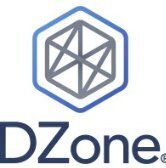Search the Community
Showing results for tags 'resource management'.
-
Resource Management Tools in 2024 Managing resources effectively is crucial for any organization’s success, and having the right tools can make a world of difference. Here are some of the top Resource Management Tools in 2024, categorized based on their strengths: Overall Best Resource Management Tools: Nifty: Offers a comprehensive suite of features for resource planning, scheduling, and tracking, making it a great all-rounder for various team sizes and project types. It boasts user-friendly interfaces, intuitive functionalities, and budget-friendly plans. Float: Primarily focused on resource scheduling and allocation, Float excels at visualizing resource availability, managing workload, and preventing burnout. Its clean interface and intuitive features make it popular among creative and marketing teams. ClickUp: A powerful and versatile platform, ClickUp offers robust resource management capabilities alongside project management, task management, and collaboration features. Its extensive customization options cater to diverse needs and workflows. Monday.com: Renowned for its visual and intuitive interface, Monday.com provides efficient resource management through workload planning, capacity visualization, and real-time team insights. It’s suitable for mid-sized to large organizations with various project needs. Best Resource Management Tools for Small and Medium-Sized Businesses (SMBs): Mosaic: Designed specifically for SMBs, Mosaic simplifies resource management with user-friendly scheduling, drag-and-drop functionalities, and budget-conscious pricing. It’s a great option for streamlining resource allocation and team collaboration. Resource Guru: Geared towards small businesses and freelancers, Resource Guru excels at scheduling individual resources and teams, managing availability, and generating invoices. Its straightforward interface and affordable plans make it user-friendly and cost-effective. Growrk: Primarily focused on creative and marketing teams, Growrk offers efficient resource scheduling, project management, and team collaboration tools. Its visual interface and budget-friendly plans cater well to the needs of smaller agencies and studios. Best Resource Management Tools for Enterprise-Level Businesses: Saviom: A comprehensive resource management platform, Saviom caters to large enterprises with complex needs. It offers workforce planning, scheduling, analytics, and integrations with various enterprise systems. Hub Planner: Designed for mid-sized and large companies, Hub Planner provides robust resource planning, allocation, and tracking functionalities. Its advanced features and scalability cater to complex project requirements and large teams. Runn: Focused on real-time resource management, Runn excels at visualizing resource availability, managing workload, and optimizing team performance across departments. Its advanced features and scalability make it suitable for large organizations with dynamic resource needs. Additional Feature-Specific Resource Management Tools: Birdview PSA: If you specifically need professional services automation (PSA) functionalities alongside resource management, Birdview PSA is a strong contender. nTask: For a feature-rich and affordable option, nTask offers project management, resource management, and team collaboration functionalities in one platform. Forecast: This tool shines in resource forecasting and capacity planning, helping businesses anticipate future needs and optimize resource allocation proactively. Paymo: Combining resource management with project management and invoicing functionalities, Paymo is a well-rounded option for streamlining workflows and finances. Choosing the right Resource Management Tool depends on your specific needs, budget, team size, and industry. Consider factors like the complexity of your projects, the size and skillsets of your team, and the level of customization you require. The post Resource Management Tools in 2024 appeared first on DevOpsSchool.com. View the full article
-
The resource usage of web applications tends to fluctuate with changes in the number of visitors, displaying noticeable tidal characteristics. To ensure stability, service providers often allocate resources for their applications according to resource usage during peak periods. These resources can easily be underutilized during off-peak hours. If these idle resources can be reclaimed and temporarily allocated to lower-priority services and returned promptly to online services when needed, the overall resource utilization rate can be significantly improved. View the full article
-
Amazon Location Service now has full support for managing resources via CloudFormation. AWS CloudFormation simplifies provisioning and management of resources on AWS. It allows you to track changes over time, apply updates in a controlled and automated manner, and include version controls so you can easily roll back changes if needed. Amazon Location now has CloudFormation support for API keys, enabling automated and streamlined management of these keys through CloudFormation templates, making it easier to provide secure access control. Additionally, developers can now modify Amazon Location resource properties through Cloudformation without having to delete the underlying data. This facilitates more efficient resource management, allows users to change the political view of Map resources, and manage tags on Amazon Location resources. Amazon Location has also introduced the ability to delete unused API Keys via CloudFormation, which optimizes testing and deployment processes. Lastly, Amazon Location now provides the option to delete active API Keys using an API call with a force-delete feature, applicable even to keys that have already been utilized. View the full article
-
Unattended Project Recommender makes identifying idle cloud projects easy, and helps you mitigate associated security issues, reduce unnecessary spend and environmental impact. In order to implement a scalable and repeatable resource lifecycle management process, it’s important to have the right tools for the job. Today, we’re announcing several new capabilities that can help you make idle project remediation a part of your company’s day-to-day operations and culture: Organization-level aggregation of recommendations for a broader view of your unattended projects Observation period configurability to give you more control into the usage windows See the cost impact of following our recommendations Shareable links so that you can distribute specific recommendations to others Let’s take a closer look at each of these new features. 1. Organization-level view of recommendations In Google Cloud, cloud administrators that are looking to cut costs, reduce their organization’s carbon impact, or clean up lingering security issues, can now use Resource Manager to find and address unattended projects. The summary banner at the top of the page, a new Recommendations column with counts of unattended projects per organization, a new column for Carbon Emissions, and the light bulbs next to unattended projects are there to help you achieve your goals. On the command line and API, the new Organization and Billing Account-level endpoints allow users to issue a single list command that returns all unattended projects in the organization, or billed to the same account (documentation). Security-minded administrators can also use the command line or API to sort and address the recommendations based on the values of the priority field, which prioritizes unattended projects based on the highest priority security recommendation found within the project (documentation). 2. Observation period configurability Previously, the Unattended Project Recommender looked for 30-days’ worth of consistent usage (or lack thereof) before producing a Recommendation. This minimum_observation_period is now configurable (usage documentation) via the Recommender API for the entire organization and can be set to predefined values from 30 up to 365 days. Organizations that look for a higher degree of confidence before applying unattended project recommendations, or those that have use cases for idling projects that are used very infrequently, are encouraged to change this configuration. 3. Cost Impact In addition to being able to prioritize unattended projects by your carbon footprint, or by the level of security risk associated with unresolved Active Assist recommendations, you can now also see via the API how much cost savings you would obtain if you remove unattended projects (documentation). This makes it easier for you to find maximum cost efficiencies to sort and focus on the unattended projects that have the most cost impact. Here’s what a response may look like with the cost impact field, displaying that removing this project will save 120 USD. code_block [StructValue([(u'code', u"costProjection:\r\n cost:\r\n currencyCode: USD\r\n nanos: -500000000\r\n units: '-120'\r\n duration: 2592000s"), (u'language', u''), (u'caption', <wagtail.wagtailcore.rich_text.RichText object at 0x3e27f4cc6190>)])] 4. Making automation easier with shareable recommendations While some cloud administrators may choose to apply recommendations in-bulk (e.g. delete all projects recommended to be removed), most cloud administrators prefer to delegate that work to the person, team or department that owns the project or is closest to it. Now recommendations that you see in Cloud Console UI come with a shareable link: you can click on the copy icon in the top right corner of the recommendation details page to copy the link to the recommendation and then share it with someone else, or even construct the link programmatically. Clicking the link takes the user to the details page of the recommendation you shared. Get started today We hope these new capabilities will help you implement a scalable and repeatable approach to resource lifecycle management. We recently published asolution for lifecycle management of unused projects that takes advantage of all these new capabilities, and we hope the patterns demonstrated there are useful for your approach. For further explorations, you can read our documentation, and start reviewing your organization’s unattended projects in Resource Manager or in Recommendation Hub. We hope that you can leverage Unattended Project Recommender to improve your cloud security posture and reduce cost, and can’t wait to hear your feedback and thoughts about this feature! Please feel free to reach us at active-assist-feedback@google.com and we also invite you to sign up for our Active Assist Trusted Tester Group if you would like to get early access to the newest features as they are developed.
-
Forum Statistics
73.8k
Total Topics71.7k
Total Posts
.png.6dd3056f38e93712a18d153891e8e0fc.png.1dbd1e5f05de09e66333e631e3342b83.png.933f4dc78ef5a5d2971934bd41ead8a1.png)



